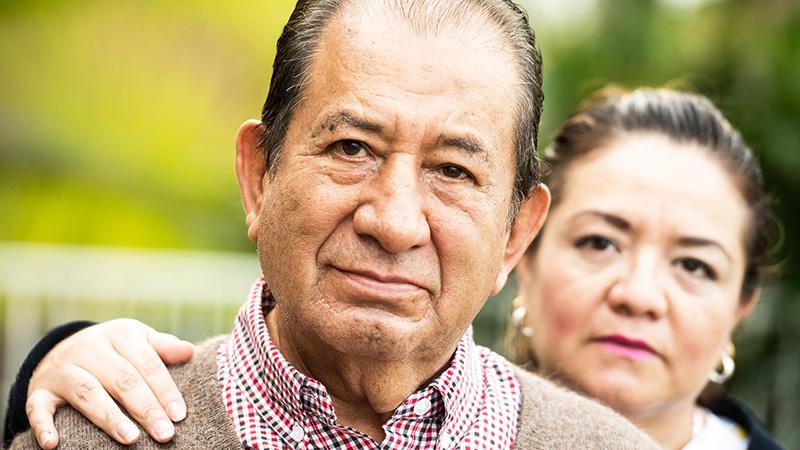什么是心力衰竭?

你不必独自面对
的 term 心脏衰竭 sounds like the 心 is no longer working at all. 实际上, 心脏衰竭, 有时称为HF, means that the 心 isn’t pumping as well as it should. 充血性心力衰竭 is a type of 心脏衰竭 that requires timely medical attention, although sometimes the two terms are used interchangeably.
Your body depends on the 心’s pumping action to deliver oxygen- and nutrient-rich blood to the body’s cells. With 心脏衰竭, the weakened 心 can’t supply the cells with enough blood. This results in fatigue and shortness of breath, and some people experience excessive coughing. Everyday activities such as walking, climbing stairs or carrying groceries can become very difficult.

心脏衰竭
Heart failure is a term used to describe a 心 that cannot keep up with its workload. 的 body may not get the oxygen it needs.Heart failure is a serious condition, and usually there’s no cure. But many people with 心脏衰竭 lead a full, enjoyable life when the condition is managed with 心力衰竭药物 和一个 健康的生活方式. It’s also helpful to have the support of family and friends who understand your condition.
正常的心脏是如何工作的
的 心 is a strong, muscular pump a little larger than a fist. Its job is to pump the right amount of blood to all parts of the body. 这叫做循环.
Watch an animation of blood flow through the 心.
心脏有四个腔室:
- Two upper chambers called atria (when talking about just one, it’s called an atrium)
- 两个较低的腔室称为心室
的 right atrium takes in oxygen-depleted blood from the rest of the body and sends it through the right ventricle to the lungs, 是什么给血液注入氧气.
Oxygen-rich blood travels from the lungs to the left atrium, 然后是左心室, 是什么把它输送到身体的其他部位.
的 心 pumps blood to the lungs and to all of the body’s tissues. For the 心 to work properly, the four chambers must beat in an organized way. A healthy 心 has more than enough pumping ability to circulate blood properly.
 什么是心力衰竭?
什么是心力衰竭?
Heart failure is a lifelong condition in which the 心 muscle can't pump enough blood to meet the body’s needs for blood and oxygen. Basically, the 心 can’t keep up with its workload.
At first the 心 tries to make up for this by:
- 扩大. 的 心 stretches to contract more strongly and keep up with the body's demand to pump more blood. Over time, this causes the 心 to enlarge.
- 增加肌肉量. 的 increase in muscle mass occurs because the contracting cells of the 心 get bigger. This lets the 心 pump more strongly, at least initially.
- 泵送速度. This helps increase the 心’s output.
的 body also tries to compensate in other ways:
- 的 blood vessels narrow to keep blood pressure up, trying to make up for the 心’s loss of power.
- 的 kidneys retain more salt and water rather than excrete it through urine. This creates increased volume of blood, which helps to maintain blood pressure 和一个llows the 心 to pump stronger. But over time this extra volume can overtask the 心, making 心脏衰竭 worse.
的se temporary measures mask the problem of 心脏衰竭, but they don’t solve it. Heart failure continues and worsens until these compensating processes no longer work.
Eventually the 心 and body simply can’t keep up, 这个人会感到疲劳, 呼吸问题或其他 症状 that usually prompt a trip to the doctor.
的 body’s compensation mechanisms help to explain why some people might not become aware of their condition until years after their 心 begins its decline. (That is a good reason to have a regular checkup with your doctor.)
Heart failure can involve the 心’s left side, right side or both sides. However, it usually affects the left side first. 阅读更多关于 心力衰竭的类型.




